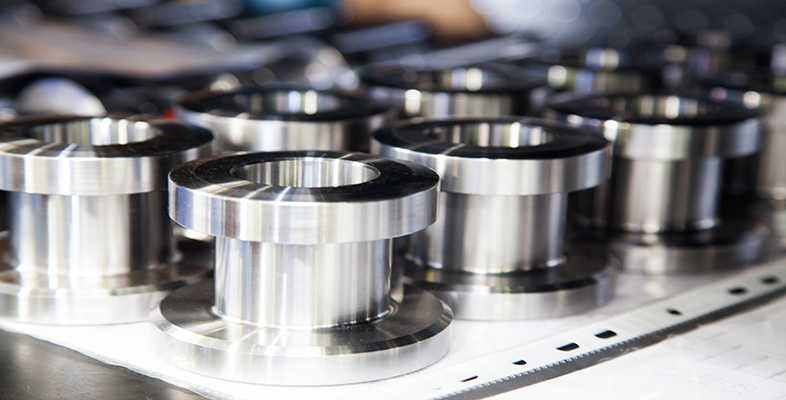7.2.3 Engineer the cutting edge to retain the sharpness
The next stage is therefore to see if surface engineering can bring about an improvement in the edge retention. The chemical composition of the surface layer of a material can be altered by implanting additional alloying elements into the surface. Using a method like this, an increase in hardness can be achieved. This increase will only occur in the surface layer.
There are three thermochemical (so-called because they use a combination of thermal and chemical effects) processes which can be used to treat steel in order to improve hardness: they are carburizing, nitriding, and carbonitriding.
Thermochemical treatments in general involve soaking the components in a bath of chemicals, or exposing them to a suitable atmosphere which contains the desired elements. These elements then diffuse into the surface of the part that is being treated. Simply, diffusion is a process by which atoms move from a high concentration of themselves to a lower concentration. Thus, if a steel component has a low concentration of carbon, and the bath that it is placed into has a high concentration of carbon, then there is a tendency for the carbon atoms to diffuse into the steel.
Processes where carbon diffuses into a material are known as carburizing treatments. Other treatments are nitriding, which enriches the surface layer with nitrogen, and carbonitriding, where both carbon and nitrogen are diffused into the surface. Components that have been treated in this way are then heat-treated to optimize the mechanical properties of this surface layer.
In the case of a knife, the surface layer needs to be hard while the body of the knife still needs to retain some measure of toughness. A fully hardened knife blade would be too brittle for domestic use. The hardness of a layer treated thermochemically and then heat-treated can be between 700 and 1200 HV.
A more recent surface engineering technology to improve the cutting performance of kitchen knives is to coat the steel knife with titanium nitride (TiN), a hard and wear-resistant ceramic coating. In this way, the benefits of ceramics are combined with those of steel. The coated knife retains its performance approximately 10 times longer than an ordinary steel knife. TiN coatings for knives are typically produced by Physical vapour deposition.
A further, even more recent, development is to use an alternative coating method known as Plasma spraying. Plasma spraying allows coatings of tungsten carbide (chemical formula WC) to be deposited which can give up to an 11,000 times improvement in edge retention over an uncoated plain edge knife.
To coat kitchen knives using plasma spraying, the knives are positioned so that they can all be sprayed in one process and so that the depth of the coating along the knife blade is carefully controlled. There is little point in coating the whole knife, as this would be uneconomic. Further, only one side of the knife blade is coated so that any wear causes the sharp edge to continuously regenerate itself, rather than having layers of coating being chipped away at the cutting edge. One of the advantages of the plasma-spraying method is that much thicker coatings can be used. The coating applied here is approximately 30 μm in thickness compared to the PVD coating which is 3–4 μm in thickness. For this application, the plasma-sprayed coating is more effective.
